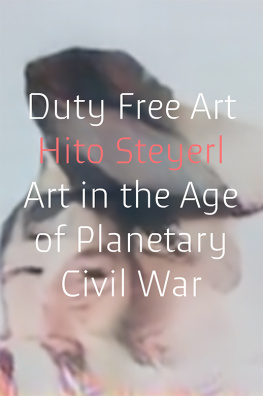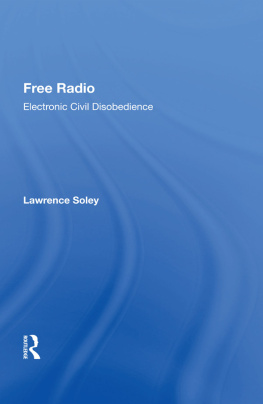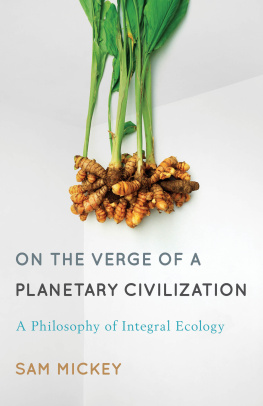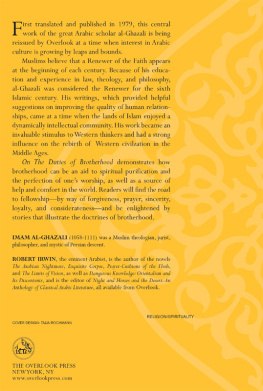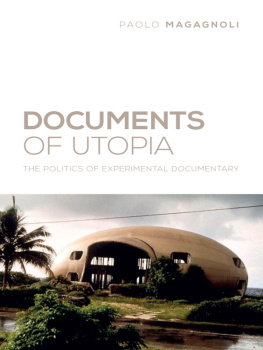Hito Steyerl - Duty Free Art - Art in the Age of Planetary Civil War
Here you can read online Hito Steyerl - Duty Free Art - Art in the Age of Planetary Civil War full text of the book (entire story) in english for free. Download pdf and epub, get meaning, cover and reviews about this ebook. year: 0, publisher: Penguin Random House LLC (Publisher Services), genre: Art. Description of the work, (preface) as well as reviews are available. Best literature library LitArk.com created for fans of good reading and offers a wide selection of genres:
Romance novel
Science fiction
Adventure
Detective
Science
History
Home and family
Prose
Art
Politics
Computer
Non-fiction
Religion
Business
Children
Humor
Choose a favorite category and find really read worthwhile books. Enjoy immersion in the world of imagination, feel the emotions of the characters or learn something new for yourself, make an fascinating discovery.
- Book:Duty Free Art - Art in the Age of Planetary Civil War
- Author:
- Publisher:Penguin Random House LLC (Publisher Services)
- Genre:
- Year:0
- Rating:4 / 5
- Favourites:Add to favourites
- Your mark:
- 80
- 1
- 2
- 3
- 4
- 5
Duty Free Art - Art in the Age of Planetary Civil War: summary, description and annotation
We offer to read an annotation, description, summary or preface (depends on what the author of the book "Duty Free Art - Art in the Age of Planetary Civil War" wrote himself). If you haven't found the necessary information about the book — write in the comments, we will try to find it.
Duty Free Art - Art in the Age of Planetary Civil War — read online for free the complete book (whole text) full work
Below is the text of the book, divided by pages. System saving the place of the last page read, allows you to conveniently read the book "Duty Free Art - Art in the Age of Planetary Civil War" online for free, without having to search again every time where you left off. Put a bookmark, and you can go to the page where you finished reading at any time.
Font size:
Interval:
Bookmark:

Hito Steyerl

First published by Verso 2017
Hito Steyerl 2017
This work is licensed under a Creative Commons
Attribution-Non Commercial 4.0 License
All rights reserved
The moral rights of the author have been asserted
1 3 5 7 9 10 8 6 4 2
Verso
UK: 6 Meard Street, London W1F 0EG
US: 20 Jay Street, Suite 1010, Brooklyn, NY 11201
versobooks.com
Verso is the imprint of New Left Books
ISBN-13: 978-1-78663-243-2
ISBN-13: 978-1-78663-245-6 (UK EBK)
ISBN-13: 978-1-78663-246-3 (US EBK)
British Library Cataloguing in Publication Data
A catalogue record for this book is available from the British Library
Library of Congress Cataloging-in-Publication Data
A catalog record for this book is available from the Library of Congress
Typeset in Sabon by MJ & N Gavan, Truro, Cornwall
Printed in the UK by CPI Group
I love history.
But history doesnt love me back,
Whenever I call her I get her answering machine.
She says: Insert logo here.
A tank on a pedestal. Fumes are rising from the engine. A Soviet battle tankcalled IS3 for Iosip Stalinis being repurposed by a group of pro-Russian separatists in Konstantinovka, Eastern Ukraine. It is driven off a World War II memorial pedestal and promptly goes to war. According to a local militia, it attacked a checkpoint in Ulyanovka, Krasnoarmeysk district, resulting in three dead and three wounded on the Ukrainian side, and no losses on our side.
One might think that the active historical role of a tank would be over once it became part of a historical display. But this pedestal seems to have acted as temporary storage from which the tank could be redeployed directly into battle. Apparently, the way into the museumor even into history itselfis not a one-way street. Is the museum a garage? An arsenal? Is a monument pedestal a military base?
But this opens up more general questions. How can one think of art institutions in an age that is defined by planetary civil war, growing inequality, and proprietary digital technology? The boundaries of the institution have become fuzzy. They extend from pumping the audience for tweets, to a future of neurocurating in which paintings will surveil their audience via facial recognition and eye tracking to check whether the paintings are popular enough or whether anyone is behaving suspiciously.
Is it possible, in this situation, to update the twentieth-century terminology of institutional critique? Or does one need to look for different models and prototypes? What is a model anyway, under such conditions? How does it link on-and off-screen realities, mathematics and aesthetics, future and past, reason and treason? And what is its role in a global chain of projection as production?
In the example of the kidnapped tank, history invades the hypercontemporary. It is not an account of events post factum. It acts, it feigns, it keeps on changing. History is a shape-shifting player, if not an irregular combatant. It keeps attacking from behind. It blocks off any future. Frankly, this kind of history sucks.
This history is not a noble endeavor, something to be studied in the name of humankind so as to avoid being repeated. On the contrary, this kind of history is partial, partisan, and privatized, a self-interested enterprise, a means to feel entitled, an objective obstacle to coexistence, and a temporal fog detaining people in the stranglehold of imaginary origins.
Does time itself run backwards nowadays? Did someone remove its forward gear and force it to drive around in circles? History seems to have morphed into a loop.
In such a situation, one might be tempted to rehash Marxs idea of historical repetition as farce. Marx thought that historical repetitionlet alone reenactmentsproduces ludicrous results. However, quoting Marx, or indeed any historical figure, would itself constitute repetition, if not farce.
So lets turn to Tom Cruise and Emily Blunt instead, which is more helpful. In the blockbuster Edge of Tomorrow, the Earth has been invaded by a savage alien species known as Mimics. While trying to get rid of them, Blunt and Cruise get stuck in a time-looped battle; they get killed over and over again, only to respawn with sunrise. They have to find a way out of the loop. Where does the Mimic-in-chief live? Underneath the Louvres pyramid! This is where Blunt and Cruise go to destroy him.
The enemy is inside the museum, or more accurately, underneath it. The Mimics have hijacked the place and turned time into a loop. But what does the form of the loop mean, and how is it linked to warfare? Giorgio Agamben has recently analyzed the Greek term stasis, which means both civil war and immutability: something potentially very dynamic, but also its absolute opposite.
Stasis happens as a perpetual transition between the private and public spheres. It is a very useful mechanism for a one-way redistribution of assets. What was public is privatized by violence, while formerly private hatreds become the new public spirit.
The current version of stasis is set in an age of cutting-edge nonconventional warfare. Contemporary conflicts are fought by Uber-militias, bank-sponsored bot armies, and Kickstarter-funded toy drones. Their protagonists wear game gear and extreme sports gadgets, and they coordinate with Vice reporters via WhatsApp. The result is a patchwork form of conflict that uses pipelines and 3G as weapons within widespread proxy stalemates. The present permawar is fought by historical battle reenactors (in the Ukrainian example, on both sides of the conflict), who one could well call real-life Mimics. Stasis is the curving back of time into itself, in the context of permanent war and privatization. The museum leaks the past into the present, and history becomes severely corrupted and limited.
Alfonso Cuarns brilliant film Children of Men presents another way that art institutions might respond to planetary civil war. It depicts a bleak near-future where humanity has become sterile. A planetary civil war has engulfed Britain, dividing the island into segregated zones, one for refugees and undocumented personsa total dystopiaand another for citizens. Turbine Hall at the Tate Modern has become the home of the Ministry of the Arts; here, precious artworks are given a safe haven: an Ark of the Arts. In one scene set in Turbine Hall, Michelangelos David is shown with a broken leg, perhaps damaged during the conflict.
The destruction of antiquities by Daesh (also known as ISIS or Islamic State), which was preceded by major destruction and the looting of cultural objects during the US invasion in Iraq, raises the question: Wouldnt it be great to have an Ark of the Arts that could rescue the antiquities of Palmyra or Nineveh and safeguard cultural treasures from violence?
However, the Ark of the Arts is a quite ambivalent institution. One is never quite sure what its function really is. In another scene, Picassos Guernica is used as a decoration for a private dinner.
Besides the international biennial, duty free art storage is probably the most important contemporary active form for art. Its like the dystopian backside of the biennial, at a time when liberal dreams of globalization and cosmopolitanism have been realized as a multipolar mess peopled with oligarchs, warlords, too-big-to-fail corporations, dictators, and lots of newly stateless people.
Font size:
Interval:
Bookmark:
Similar books «Duty Free Art - Art in the Age of Planetary Civil War»
Look at similar books to Duty Free Art - Art in the Age of Planetary Civil War. We have selected literature similar in name and meaning in the hope of providing readers with more options to find new, interesting, not yet read works.
Discussion, reviews of the book Duty Free Art - Art in the Age of Planetary Civil War and just readers' own opinions. Leave your comments, write what you think about the work, its meaning or the main characters. Specify what exactly you liked and what you didn't like, and why you think so.


